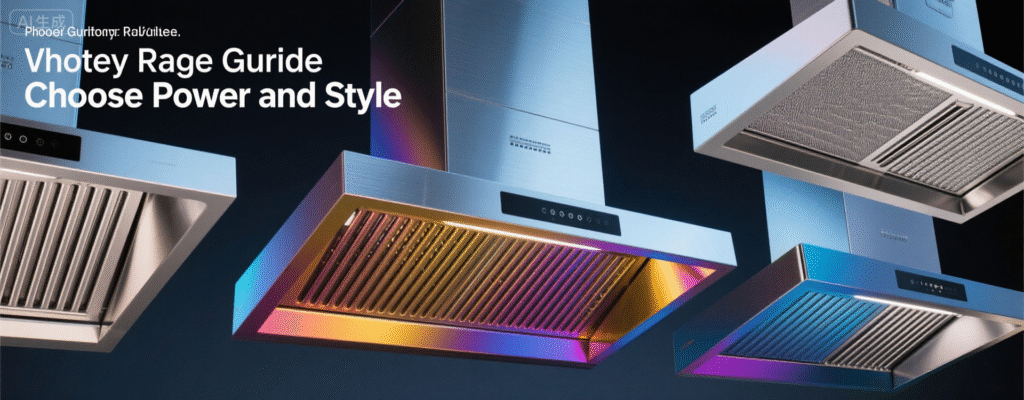Choosing the right vent hood range is a critical decision for any kitchen, impacting both air quality and style. This guide will delve into the key factors to consider, from performance metrics to design integration, ensuring you select a unit that effectively clears the air while complementing your kitchen’s aesthetic. Understanding these elements is the first step toward a healthier, more enjoyable cooking environment.
Understanding Performance and Power
The primary function of any range hood is to remove airborne grease, smoke, and odors. Performance is measured by two key metrics: Cubic Feet per Minute (CFM) and sones. CFM indicates the volume of air the hood can move per minute. For optimal performance, a general rule is to have 1 CFM per 100 BTUs of your cooktop’s power. For a powerful gas range exceeding 60,000 BTUs, a hood with 600 CFM or more is recommended. The Home Ventilating Institute (HVI), an authoritative body that certifies home ventilation products, provides independent ratings for CFM and sound levels, offering a reliable benchmark for comparison.
Sound level, measured in sones, is equally important. A lower sone rating means a quieter operation. For context, a quiet kitchen might be around 4 sones, while a whisper-quiet model can operate at 1 sone or less. Balancing high CFM with a low sone rating ensures your kitchen remains a pleasant space even during intense cooking sessions.
Selecting the Right Style and Installation
Beyond raw power, the style and installation type of your vent hood range are crucial for both functionality and design cohesion. The main types include:
- Under-Cabinet: Ideal for kitchens with existing cabinetry, these hoods mount directly beneath a wall cabinet.
- Wall-Chimney: A popular freestanding style that mounts to the wall and often features a visible chimney duct for a professional look.
- Island: Designed to hang from the ceiling over a cooktop on a kitchen island, these become a striking focal point.
- Insert/Downdraft: Hood inserts are built into custom cabinetry for a seamless look, while downdraft systems rise from behind the cooktop, ideal for open-plan kitchens where an overhead hood is not desired.
Ducted (vented) systems, which expel air outside, are significantly more effective at removing contaminants than ductless (recirculating) models, which filter air through charcoal filters and recirculate it back into the kitchen. A 2019 study published in the journal Indoor Air highlighted that proper mechanical ventilation, like ducted range hoods, is essential for reducing exposure to harmful pollutants generated during cooking, such as nitrogen dioxide and particulate matter.
In summary, selecting the ideal vent hood range requires a careful balance of powerful performance (CFM), quiet operation (sones), and a style that integrates with your kitchen’s layout and design. By prioritizing a ducted system and ensuring the hood’s capacity matches your cooking habits, you invest not only in a cleaner kitchen but also in the long-term air quality and comfort of your home. Making an informed choice ensures your kitchen remains the heart of your home, free of lingering odors and pollutants.
